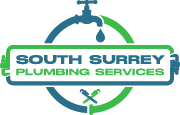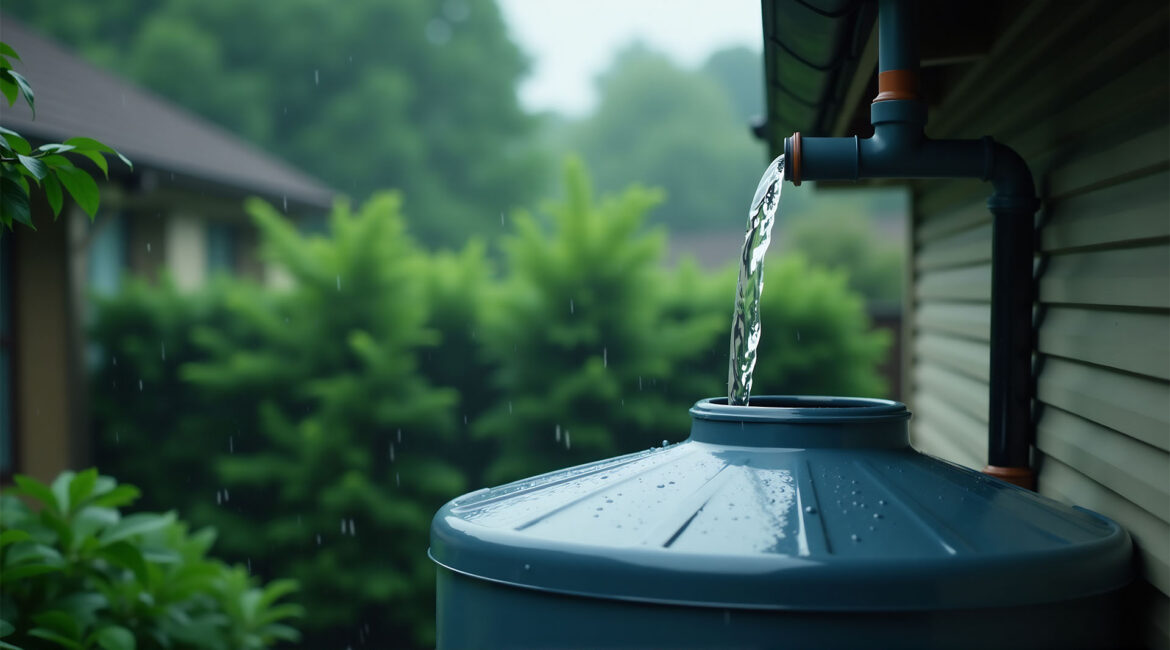Ready to turn BC’s abundant rainfall into a valuable resource? We’ve installed hundreds of rainwater harvesting systems across the Lower Mainland, and homeowners consistently tell us they wish they’d started sooner. From simple rain barrels to sophisticated collection systems, here’s everything you need to know about harvesting rainwater at your home.
Table of Contents
- Your Roof Is a Gold Mine of Free Water
- The Surprising Benefits Go Beyond Water Savings
- Five Components Make the System Work
- Size Matters: Calculating Your Collection Potential
- Location and Installation Are Critical
- Maintenance Is Easier Than You Think
- BC Laws Actually Encourage Rainwater Harvesting
- Winter Requires Special Consideration
- Cost Recovery Happens Faster Than Expected
- Professional Help Makes Sense for These Scenarios
- When To Call a Pro?
- Key Takeaways
1. Your Roof Is a Gold Mine of Free Water
The average home in our region can collect between 50,000 to 100,000 litres annually from roof runoff alone. That’s enough water to handle all your outdoor watering needs and then some. A modest 150-square-metre roof collects approximately 1,250 litres from just 10mm of rain—and we get about 1,200mm annually.
We calculate collection potential using this simple formula: roof area × annual rainfall × 0.8 efficiency factor. The efficiency factor accounts for losses from evaporation, overflow, and first-flush diversion. Even conservative estimates show impressive collection volumes that many homeowners find surprising.
The best part? This resource literally falls from the sky for free. While your neighbours watch their water bills climb each summer, you’ll have thousands of litres stored and ready. But the benefits of harvesting rainwater extend far beyond the obvious water savings.
2. The Surprising Benefits Go Beyond Water Savings
Rainwater is naturally soft, containing no minerals or chemicals like chlorine found in tap water. Your plants actually prefer it—we’ve seen gardens transform after switching to rainwater irrigation. Vegetables grow larger, flowers bloom more vibrantly, and lawns stay greener with this natural alternative.
Environmental benefits multiply quickly. Every harvesting system reduces stormwater runoff, decreasing the burden on municipal drainage systems during heavy rains. This means fewer flooding issues in your neighbourhood and less erosion in local waterways. You’re literally helping protect local salmon streams.
During summer water restrictions, stored rainwater provides independence. While Stage 3 restrictions leave neighbours with brown lawns, you’ll have your own supply ready for use. Some clients report feeling like they’ve gained “water security” for their property. Understanding system components helps you maximize these benefits.
3. Five Components Make the System Work
Every rainwater harvesting system includes these essential elements working in harmony. First, your existing gutters and downspouts channel water from the roof—these need proper sizing for Pacific Northwest rains, typically 125mm for most homes.
Conveyance systems direct water from downspouts to storage, including crucial first-flush diverters. These divert the initial dirty runoff containing dust, bird droppings, and debris. We recommend diverting 40 litres per 100 square metres of roof area for optimal water quality.
Storage tanks form the system’s heart, ranging from 200-litre decorative rain barrels to 5,000-litre polyethylene tanks. Underground cisterns offer larger capacity without sacrificing yard space. Materials include food-grade plastic, fibreglass, or concrete, each with specific advantages.
Distribution varies based on intended use—gravity-fed systems work well for gardens, while pumps enable toilet flushing or washing machine connections. Filters remove particles, with mesh sizes from 5mm for irrigation down to 5 microns for indoor use.
Overflow management prevents system damage during heavy rains through properly designed pipes directing excess water away from foundations. Now let’s determine what size system makes sense for your property.
4. Size Matters: Calculating Your Collection Potential
System sizing depends on three factors: roof area, rainfall patterns, and intended uses. We use a practical approach that balances collection potential with actual usage needs. There’s no point storing more water than you’ll realistically use between rain events.
Start by measuring your roof’s footprint—not the sloped area, just the horizontal projection. Multiply this by annual rainfall (about 1,200mm locally) and 0.8 for efficiency. A 200-square-metre roof potentially collects 192,000 litres annually, though seasonal distribution varies significantly.
Consider your water needs carefully. Garden irrigation typically requires 25 litres per square metre weekly during summer. A 100-square-metre garden needs 2,500 litres weekly, or about 30,000 litres for a typical growing season. This helps determine optimal storage capacity.
Balance collection potential with storage costs and space constraints. We often recommend starting with 2,000-5,000 litres capacity, expandable as needs grow. Modular systems allow easy expansion without replacing existing components. Strategic placement maximizes both collection efficiency and usability.
5. Location and Installation Are Critical
Tank placement affects both system efficiency and longevity. Level, stable ground capable of supporting significant weight is essential—remember, water weighs 1 kilogram per litre. A full 3,000-litre tank weighs over 3 tonnes, requiring proper base preparation.
Proximity to downspouts minimizes piping requirements, but consider aesthetics and property lines. Many municipalities require 1.5-metre setbacks from boundaries. South-facing locations experience more temperature fluctuations, potentially affecting plastic tank longevity over time.
Elevation provides free pressure for gravity-fed systems—every 3 metres of height delivers roughly 4.3 PSI. Placing tanks on platforms or natural slopes improves flow rates without pumps. However, elevated tanks require stronger support structures and safe access for maintenance.
Underground installations maximize space and provide temperature stability but cost more initially. Excavation, reinforced containers, and waterproofing add complexity. Access hatches must remain clear for inspection and cleaning. Professional installation ensures these critical factors are properly addressed.
6. Maintenance Is Easier Than You Think
Successful rainwater harvesting requires regular but simple maintenance tasks. Gutter cleaning twice yearly, especially after fall leaf drop, ensures maximum collection. Clogged gutters reduce collection and can cause expensive fascia and foundation damage.
First-flush diverters need monthly draining during wet seasons—just open the valve to release accumulated sediment. This simple step dramatically improves water quality and reduces tank cleaning frequency. Mark your calendar for the first of each month as a reminder.
Annual tank inspection checks for algae growth, sediment buildup, and mosquito larvae. Keeping tanks covered and opaque prevents most issues. Cleaning involves draining and rinsing with a garden hose—a two-hour job for most systems.
Filters require cleaning frequency based on use—monthly for irrigation during summer, quarterly during lighter use. Pump strainers need inspection every three months, with annual professional service recommended for longevity. These simple tasks ensure decades of reliable operation.
7. BC Laws Actually Encourage Rainwater Harvesting
British Columbia actively supports rainwater collection with progressive regulations. No restrictions exist for outdoor use—collect and use freely for gardens, car washing, or pools. The BC Building Code explicitly allows indoor use for toilets and laundry in single-family homes.
Indoor applications require meeting specific standards including backflow prevention and proper treatment. Local health authorities may require water quality testing for potable uses. These requirements protect both your family and municipal water supplies from contamination.
Municipal bylaws vary across the Lower Mainland, with many offering rebate programs. Some jurisdictions have specific requirements for tank placement, overflow management, and mosquito prevention. Always verify local regulations before installation, especially for larger systems.
Permits typically aren’t required for simple rain barrels but become necessary for plumbing connections or structural modifications. Working with experienced professionals ensures compliance while maximizing available incentives. Let’s address a crucial consideration for our climate—winter operation.
8. Winter Requires Special Consideration
Freezing temperatures pose the biggest threat to rainwater harvesting systems in our region. Water expands roughly 9% when freezing, potentially cracking tanks, splitting pipes, and damaging pumps. Proper winterization prevents costly repairs and extends system life.
Three winterization strategies work well locally. Complete drainage involves emptying tanks and pipes before first frost, essentially shutting down until spring. Partial operation maintains tank storage while draining exposed components. Full winter operation requires insulation or heat-tracing of vulnerable components.
Tank placement affects freeze resistance—underground or partially buried tanks rarely freeze due to ground warmth. Above-ground tanks benefit from insulation wrapping or placement against heated buildings. Dark-colored tanks absorb solar heat, providing some freeze protection.
Overflow pipes require special attention as ice blockages cause system backups. Installing multiple overflow points and keeping them clear of debris prevents problems. Some systems include heating cables for critical components, ensuring year-round operation. Now let’s talk about return on investment.
9. Cost Recovery Happens Faster Than Expected
Initial investment varies widely based on system complexity. Basic rain barrel setups cost less than a nice dinner out, while sophisticated 10,000-litre systems with pumps and filtration represent significant investments. Most homeowners find middle-ground solutions offer the best value.
Water bill savings accumulate quickly during summer months. Reducing outdoor water use by 40% typically saves hundreds annually. During drought restrictions when neighbours pay premium rates or face fines, your stored water becomes even more valuable.
Hidden savings include reduced storm sewer charges (where applicable), lower garden center bills from healthier plants, and extended irrigation system life from using soft water. Some insurance companies offer discounts for properties with reduced flood risk from stormwater management.
Beyond financial returns, many homeowners value the independence and environmental benefits. Teaching children about water conservation through hands-on experience proves invaluable. We consistently hear that the satisfaction of water self-sufficiency exceeds monetary considerations. However, certain situations definitely warrant professional expertise.
10. Professional Help Makes Sense for These Scenarios
While basic rain barrels offer rewarding DIY projects, several situations require professional expertise. Any connection to household plumbing demands licensed plumber installation to ensure proper backflow prevention. We’ve remedied dangerous cross-contamination risks from well-intentioned DIY attempts.
Large tank installations, especially underground cisterns, need professional soil assessment and structural engineering. Improper installation leads to tank failure, flooding, or foundation damage. Professionals ensure safe handling of heavy components and decades of reliable service.
Pressurized systems with pumps require expert design for optimal efficiency. Correctly sizing pumps, pressure tanks, and controls involves hydraulic calculations beyond most homeowners’ expertise. Professional installation includes warranties and ongoing support.
Indoor use applications demand professional guidance to meet health authority requirements. Treatment systems, testing protocols, and permit navigation require specialized knowledge. The investment in professional installation protects your family’s health and your property’s value.
When To Call a Pro?
We recommend professional consultation when planning systems over 5,000 litres capacity, any indoor use connections, or pressurized distribution systems. Sites with challenging topography or drainage issues benefit from expert assessment. Historic properties may have unique gutter systems requiring specialized adaptation.
Professional installation makes sense if you’re uncomfortable working at heights, handling heavy materials, or dealing with plumbing and electrical components. Time constraints often make professional installation cost-effective—we complete in days what might take homeowners weeks.
Consider professional help for permit navigation, especially for complex systems. We understand local regulations and maintain relationships with permitting authorities. This expertise streamlines approval processes and ensures code compliance. Investing in professional installation provides peace of mind through proper design, quality components, and ongoing support.
Key Takeaways
- Professional installation recommended for large, complex, or indoor use systems
- BC homes can collect 50,000-100,000 litres annually from roof runoff
- Rainwater harvesting reduces water bills by up to 40% during summer months
- Systems range from simple rain barrels to sophisticated automated setups
- Regular maintenance involves basic tasks ensuring decades of reliable operation
- BC regulations support and encourage rainwater collection for home use





